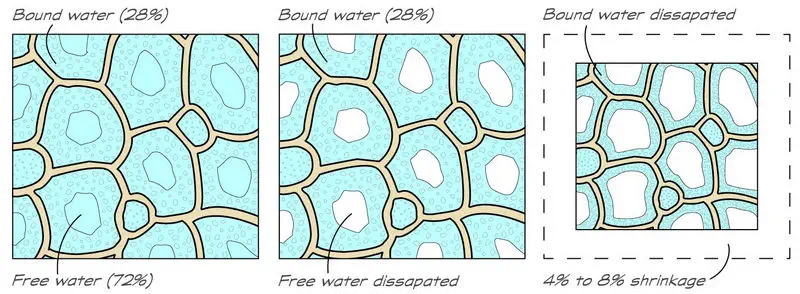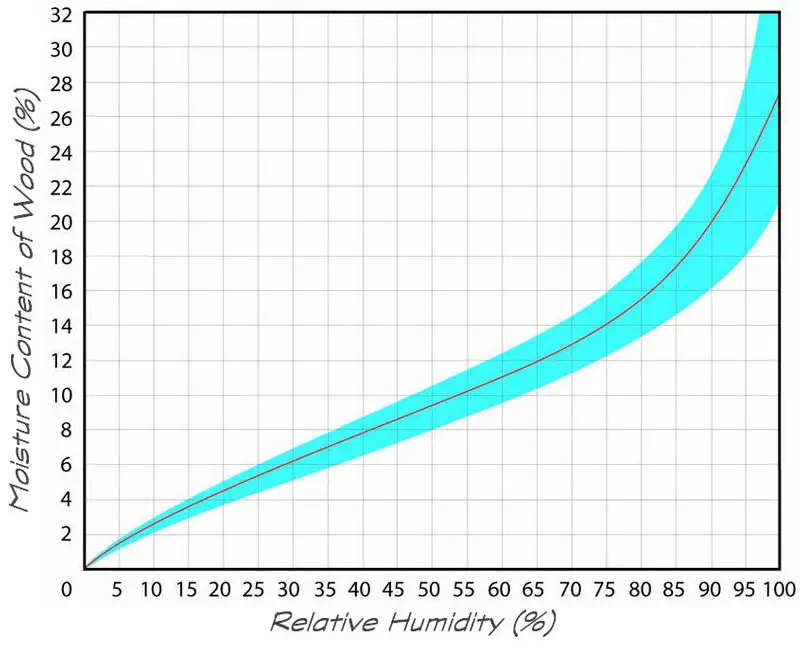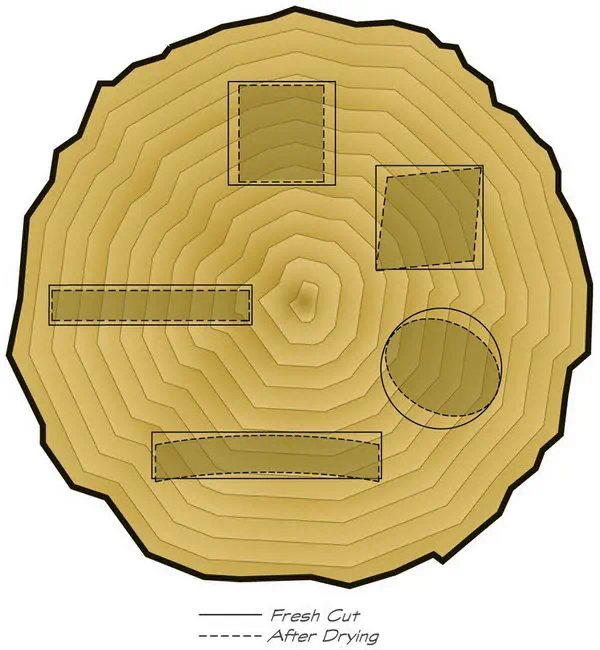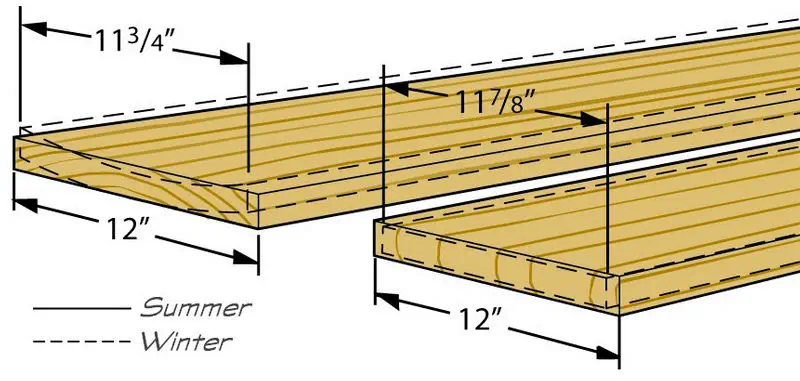MOISTURE CONTENT AND MOVEMENT
Wood moves as its moisture content changes. In a tree that’s just been felled, the wood is “green” — sap fills the cell cavities. This free water (as the sap is sometimes called) accounts for 72 percent of the total moisture content, although this percentage may vary from species to species. The remaining 28 percent saturates the wood fibers in the cell walls. This bound water in the fibers causes them to swell, just as a sponge swells when you wet it.
As the green wood dries, the free water evaporates first, then the bound water. The wood is dimensionally stable (it doesn’t shrink or swell noticeably) as it loses free water, but once it begins to lose bound water, it contracts.

In green wood, free water fills the cell cavities and bound water saturates the fibers in the cell walls. As it dries, the free water evaporates first, then the bound water. The wood doesn’t move until it begins to lose bound water.*
Wood dries to an average moisture content of between 4 and 11 percent, depending on the area of the country, but it never really comes to rest! The amount of bound water in the wood continually changes with the amount of moisture in the surrounding atmosphere. On the average, wood gains or loses about 1 percent moisture content for every 5 percent change in the relative humidity.
The wood fibers swell as they absorb moisture and shrink as they release it, causing the wood to expand and contract. In the Northern Hemisphere, relative humidity increases in the summer and decreases in the winter. And due to the effects of heating and air conditioning, the relative humidity is generally different indoors than out. Additionally, the relative humidity may vary from one building to another if the indoor temperatures differ. Consequently, wood tends to move with the seasons or whenever you change its location.

The moisture content of the wood varies with the relative humidity of the surrounding air, as this chart shows. Once the wood has been dried, the moisture content never again rises above 28 percent (its fiber saturation point) from the effects of humidity alone. For this to happen, the wood must be immersed in water.*





